Cape Breton Island
With Tramp’s new boots we headed north again, up the coast and across the causeway onto Cape Breton Island which covers the northern shores of the mainland and includes world renowned Cape Breton Highlands National Park. And an oddity for us, a city of the same name as our hometown -Sydney.
Cape Breton was settled mainly by hordes of migrating Scots who fled their homeland in search of a better life in the 19th century. Their Scottish heritage is still a very strong feature of the island with the place and people’s names, accents and music. Amazingly, road signs were in both English and Gaelic which somehow dumped Canada’s second official language of French.
We stopped by the Glenora Distillery and took a tour – and sample – of the oldest single malt whiskey distillery in North America. This was pure Scotland transposed to Cape Breton, the background and history, the accents and the beautiful taste of a ten year old single malt. We ended the day in the town of Inverness (of course) with links golf courses running through the sand dunes near the beach (very Scottish).
We parked at the end of the road on the beach and set up our chairs for the rare treat (for us) of watching the sunset over the water. It was a beautiful calm evening, almost no wind and no clouds, a rare occasion in these parts, just stunning. We were visited by many people who were out enjoying the evening air and we were keen to gain as much insight into living in such a beautiful and remote place.
Of course the sun doesn’t set until about 9pm, a beautiful orange glow across the cloudless horizon, after which we had the beach to ourselves, late dinner and bed, our own private beach with the lapping water and almost full moon. A very unusual and special night all around.
But our target was Cape Breton Highlands National Park which covers most of the northern part of the island. We headed up the coast under perfect blue skies, a warm sun and not a drift of wind. We headed off on the signature hike of the national park, the Skyline trail, which was a 7.5 km (4.7 miles) loop trail that took in some of the most dramatic scenes of the park.
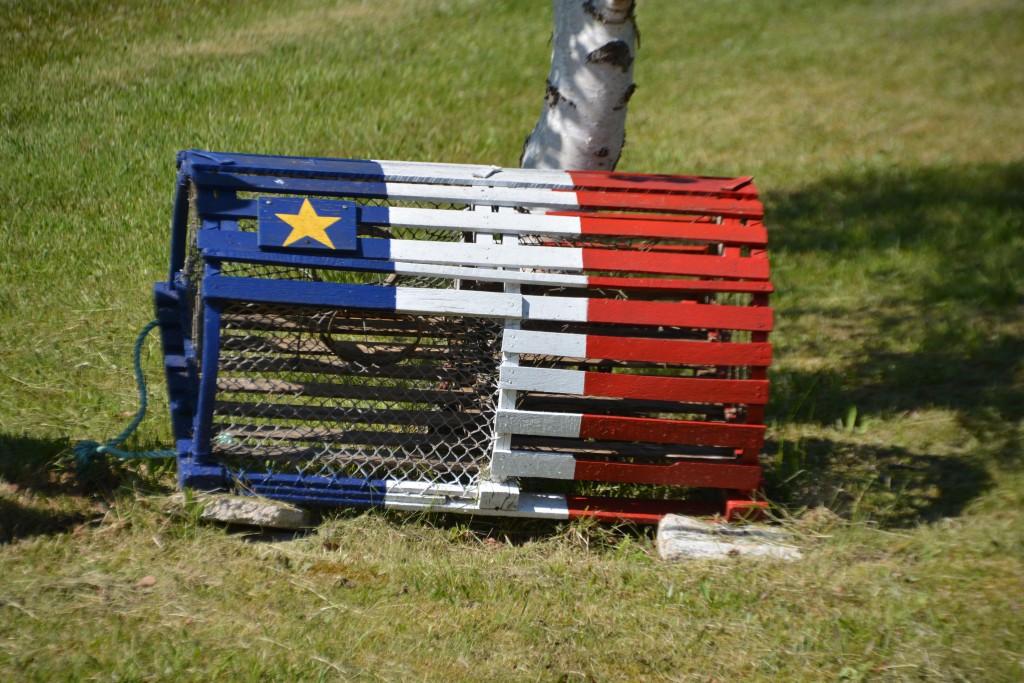
There’s also a strong French influence on this coast – hence the French Acadian flag is proudly shown in many different ways
Walking out onto a ledge above the ocean, we could look up and down the coast’s high cliffs, into the deep valleys below and across the rolling hills covered in juniper pines. We were also looking for moose, any moose really, for it is the one serious animal we hadn’t spotted so far. It was a glorious walk, full of beautiful views in all directions, a real joy. Moose droppings but no moose.
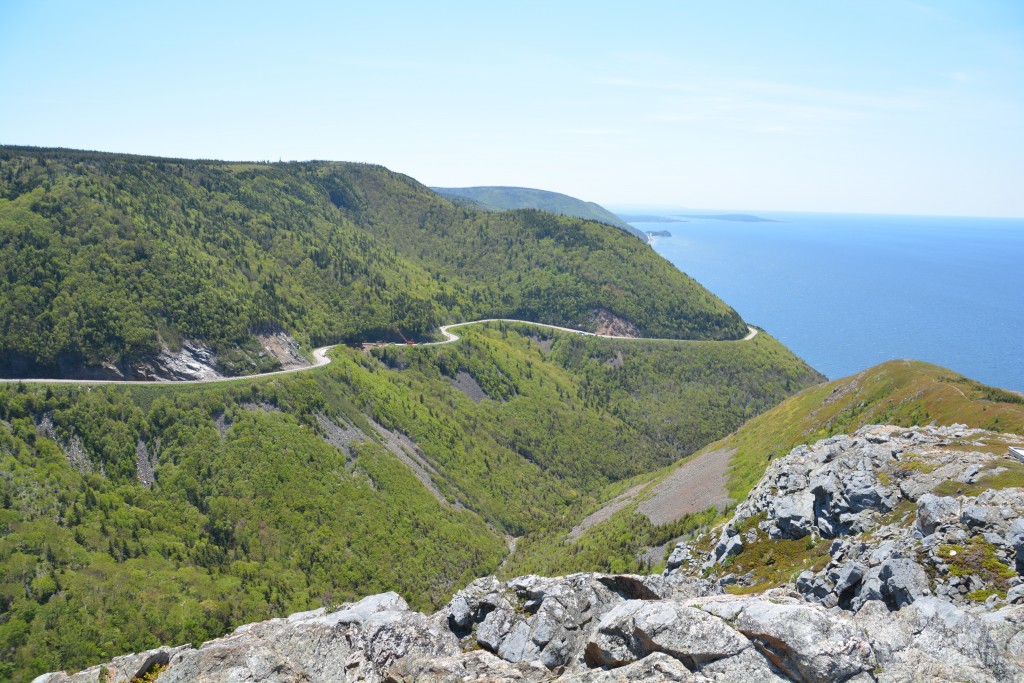
The Skyline track gave great views of the dramatic mountains and the winding road leading up to the top
We had heard of a remote place to camp at the northern tip of the island obscurely called Meat Cove and we headed northward, out of the national park, along some minor roads, winding along the steep coastline with its old rusty smashed guardrails, if any at all, eventually rounding a corner and seeing this beautiful green grassy slope on the top of a cliff.
This was our place to camp for the night, on the very edge of a 40 metre cliff, surf gently lapping on the rocky beach below, lobster pot markers bobbing in the calm bay. The sea was calm, the sky was clear and a whale slowly bobbed his way around the bay below us. We built a fire literally a metre from the cliff edge and the full moon came out on schedule. You wouldn’t want to be anywhere else.
The next morning we sat on the edge of the cliff with our coffees and had a grand local cultural show as the small lobster boats came into the bay and pulled up the traps to see if they had any legal crustaceans inside. They would quickly keep the good lobsters, throw everything else back in the sea, re-bait the trap and throw it back into the water. Fascinating stuff but hard work and better to watch it than have to do it.
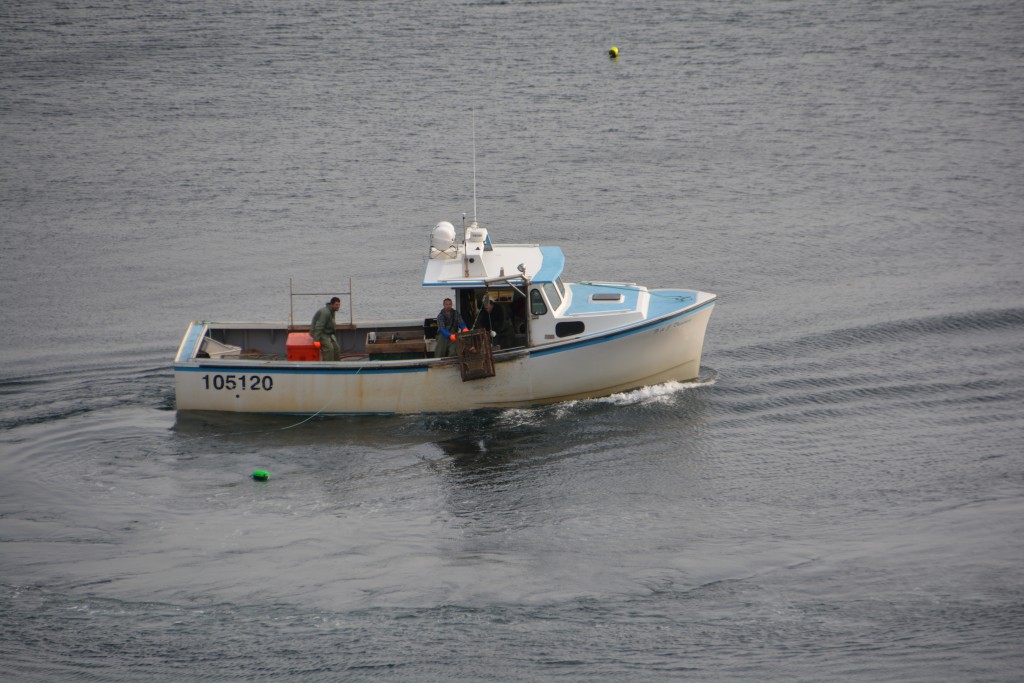
The lobster fishermen checking their traps – pulling them up, emptying them, re-baiting them and throwing them back
We cruised southward most of the day amongst a growing intermittent rain, stopping off to do short walks along the coast or a picnic lunch on an inland lake. Unlike many national parks that allow multiple places and ways to explore the it’s features this park has basically one road that curves around its borders and a few walking trails to allow exploration of its fringes. The vast interior of the park, a substantial and wholly untouched wilderness, is left to the animals.
We caught a short cable ferry across St. Ann’s Bay and as the rain started to howl in huge horizontal gusts of wind we followed signs to North Sydney, crossed a suspicious-looking clothes hanger-type bridge and bypassed Sydney – all very weird for Antipodean Sydney-siders – and camped the night in the pouring rain at another provincial park near the historic town of Louisbourg. Thank goodness for Tramp – he kept us warm and dry and cosy.
Louisbourg proved to be worth the effort and then some. This site was originally founded by the French in 1713 where they built a fortification to protect their settlers who were fishing, trapping and exploring the wild Maritime coastline. The settlement grew to 2,400 people, even more in summer when French supply ships would arrive from the motherland, and helped France expand their foothold in the new world. How life must have been in these harsh and lonely conditions are beyond imagination.
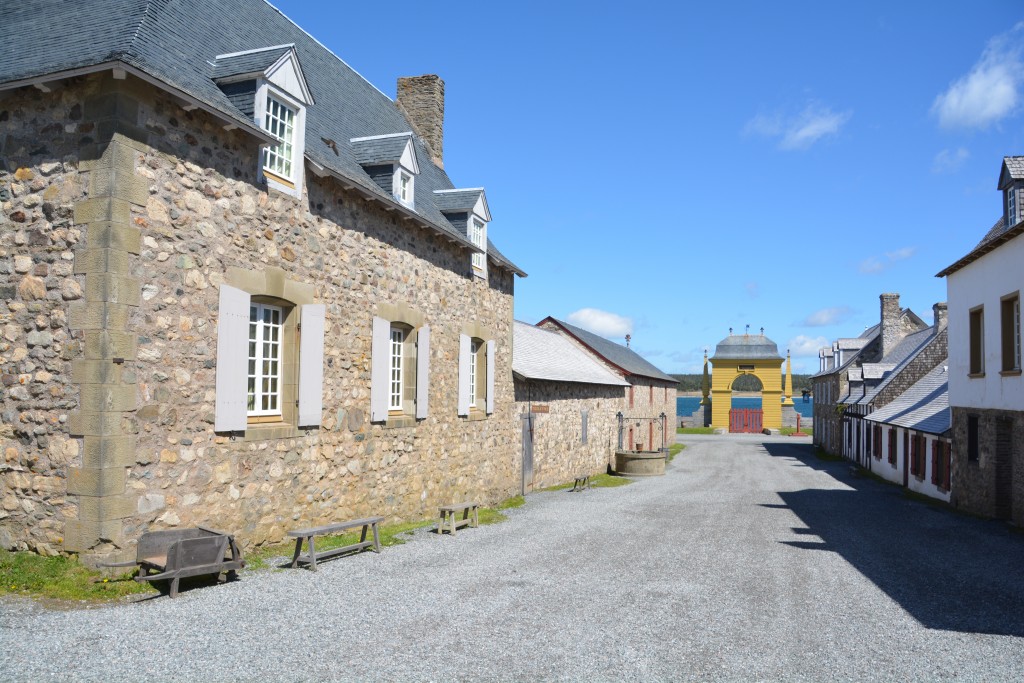
The fabulously recreated French frontier town of Louisbourg, complete with locals dressed as settlers
But the site was sieged by the British twice in the coming years, first in 1745 and again in 1758 when they shipped out all the French Acadians and burned the fort and town down to the ground. The British victory at Louisbourg marked the end of France’s expansion in the Americas and was probably quite a nasty affair for the losers in that battle.
The site has been largely rebuilt as if it was 1745 and still French with many young locals dressing up in character and providing very interesting insight to life in the fort at that time. We walked amongst the old village, explored the buildings that were open, wandered along the defensive walls and marvelled at the extent of the settlement in this remote place. We also oohed and aahed at the huge waves that were crashing on the nearby rocky coastline and at the lighthouse on the other side of the bay.
We followed the rocky coastline through little fishing villages northward to Glace Bay and then drove into Sydney, Nova Scotia. It was very strange following the little green signs for Sydney when our Sydney has 4.5 million people and is home to all our family and friends. This Sydney is a slightly run down town of about 35,000 on the banks of the river and lacks any of the charm and sophistication of our Sydney. Nevertheless, it was Saturday night and we needed to eat before catching our overnight ferry to Newfoundland so we dropped by the Governor’s Pub, which Lonely Planet described as “unquestionably the most popular place to go in town”. And so it was for local beers and lobster dinner.
We then drove over to North Sydney, not our North Sydney, and got in the queue for our ferry. This was a huge ship, carrying vehicles on three different levels, cabins for those who want to pay, restaurant, bar, the lot. We drove Tramp into its cavernous hold, spent some time in the bar and then retired to our (slightly) reclining chairs where we got about six hours of sleep with a vast room full of snoring truck drivers.
It was the end to a glorious week in Nova Scotia, particularly the time we spent up in Cape Breton Highlands National Park and the adjoining coastline, Louisbourg and the strange feeling of being in Sydney but not our Sydney.

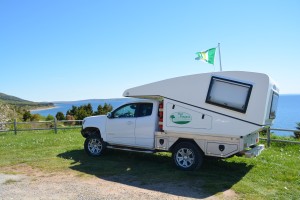
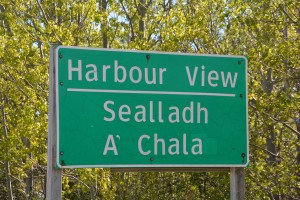
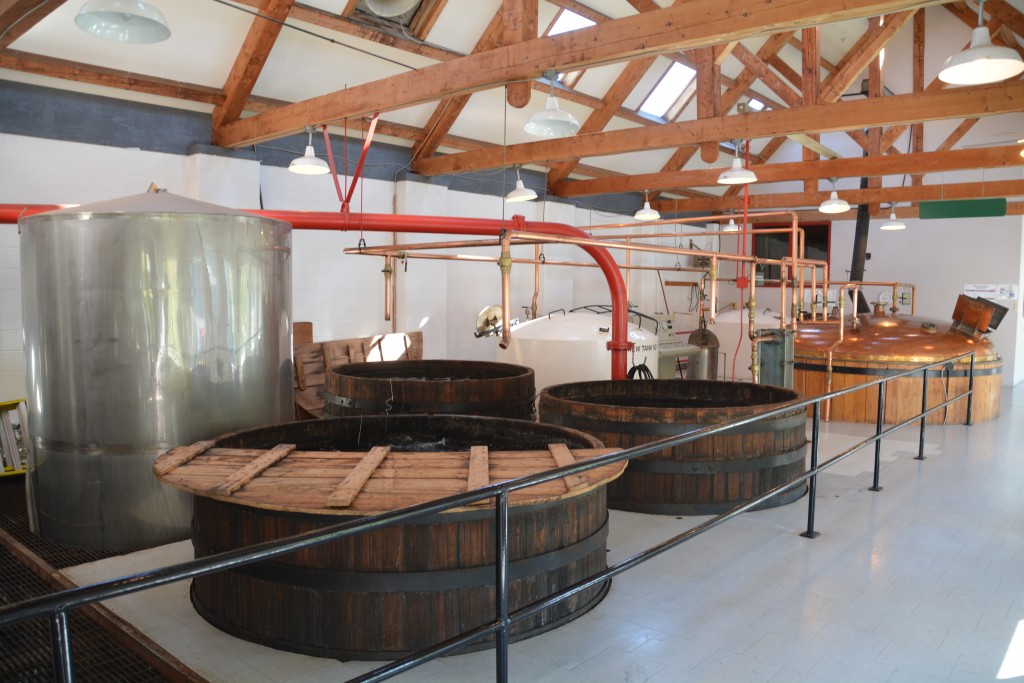
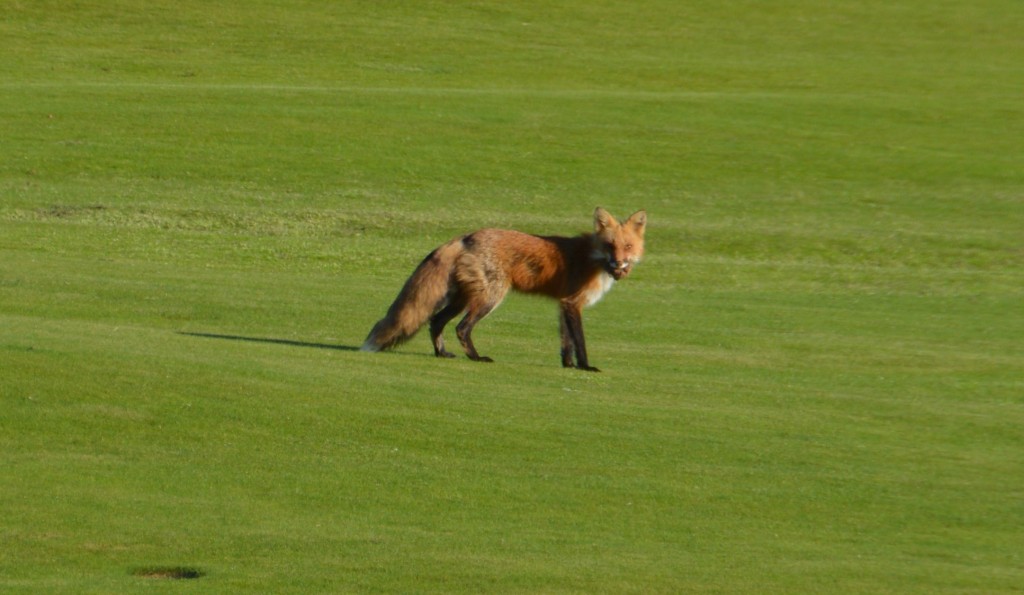
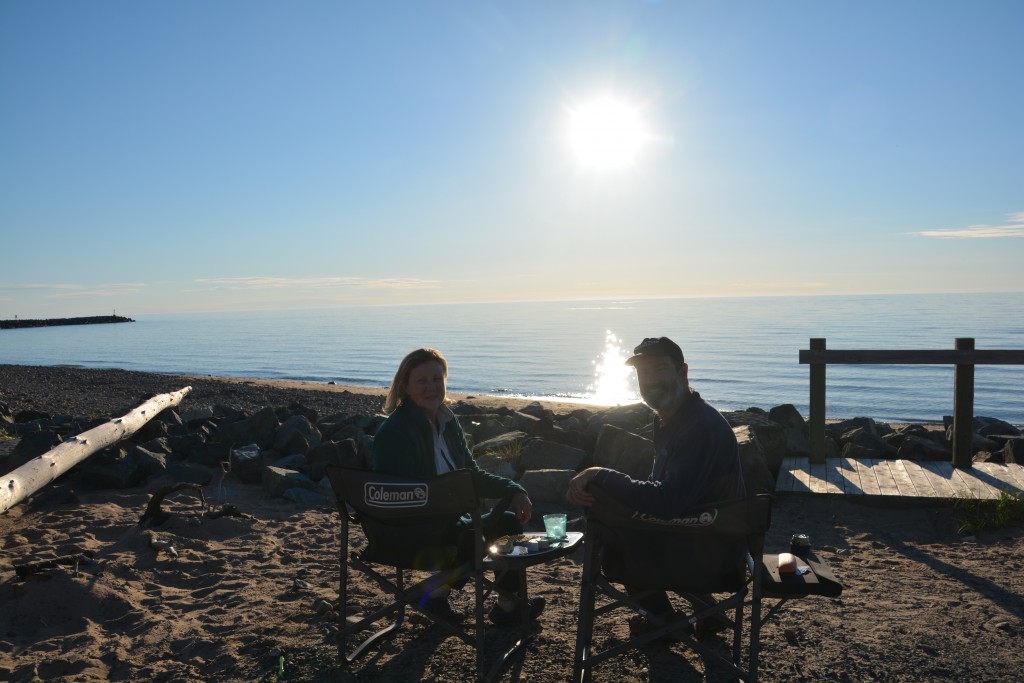
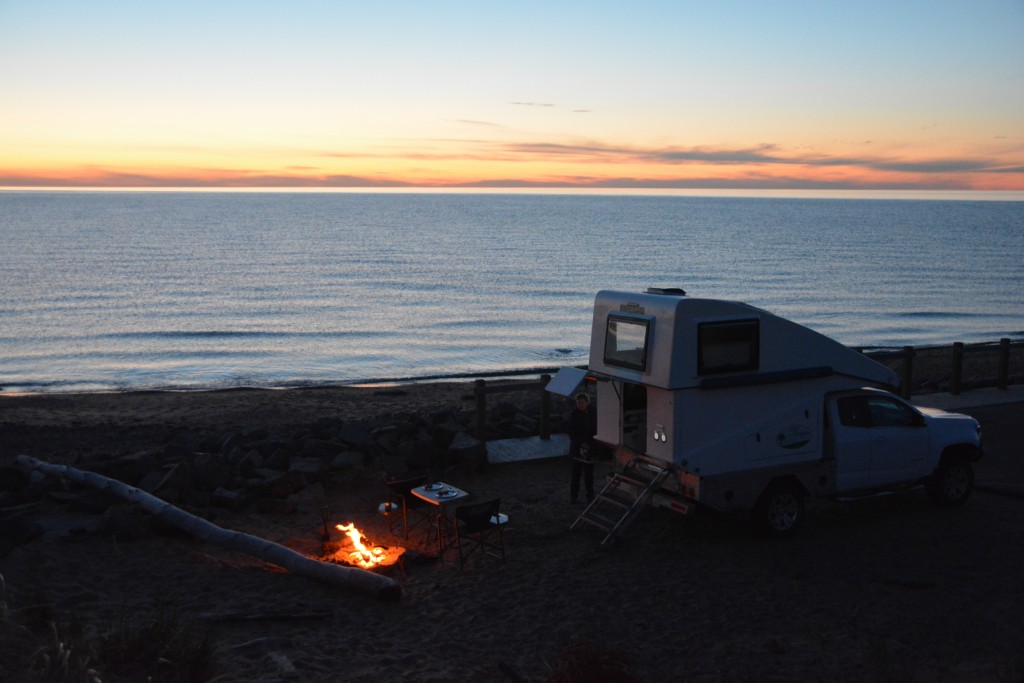
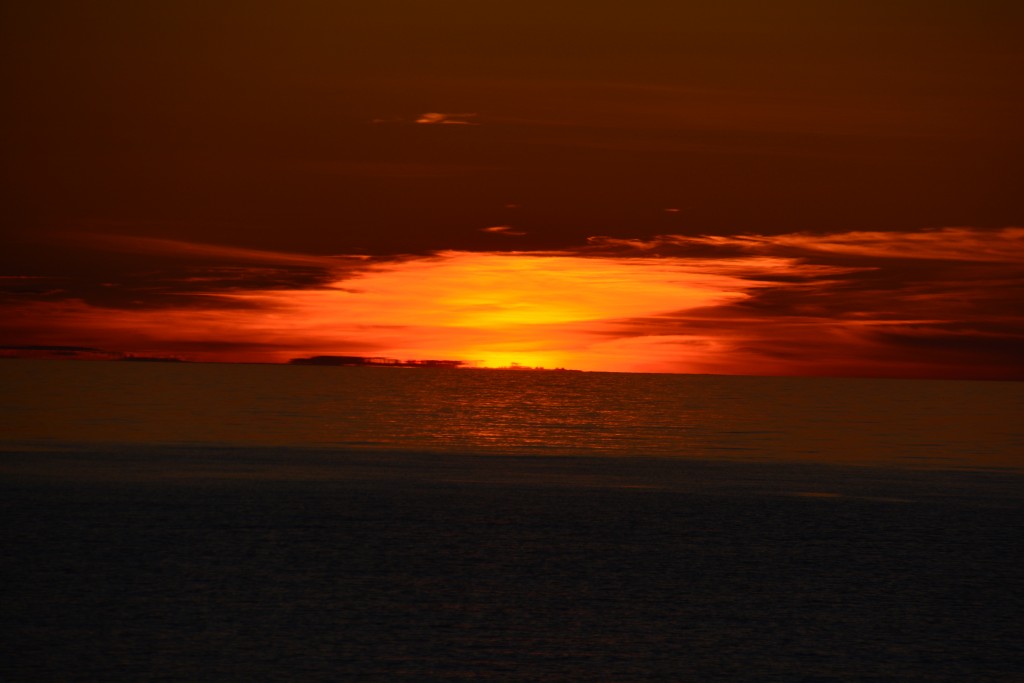
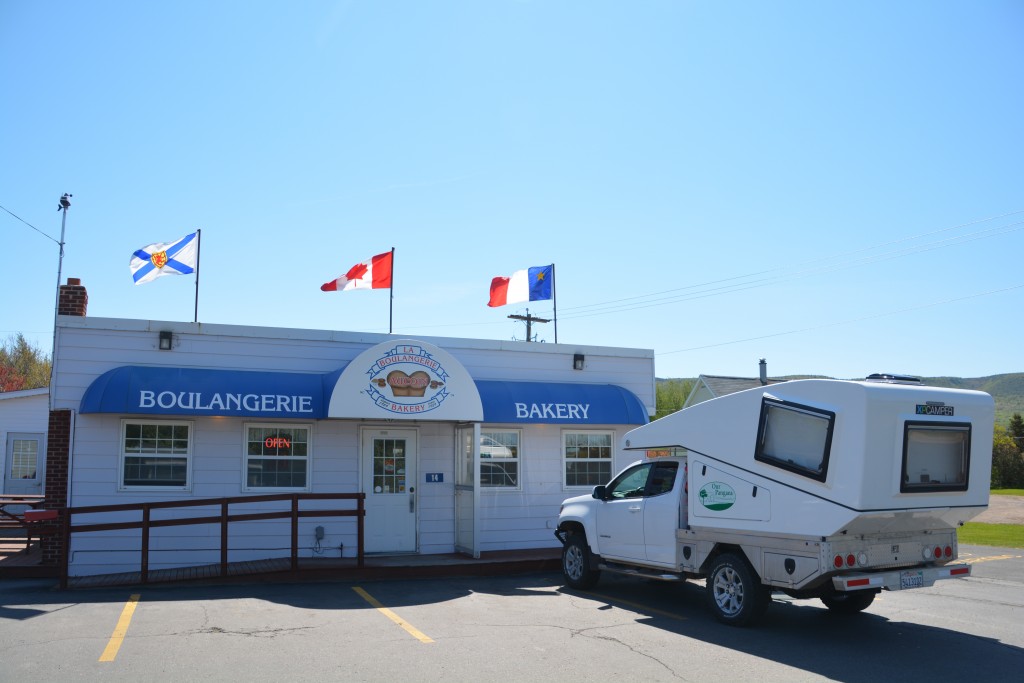
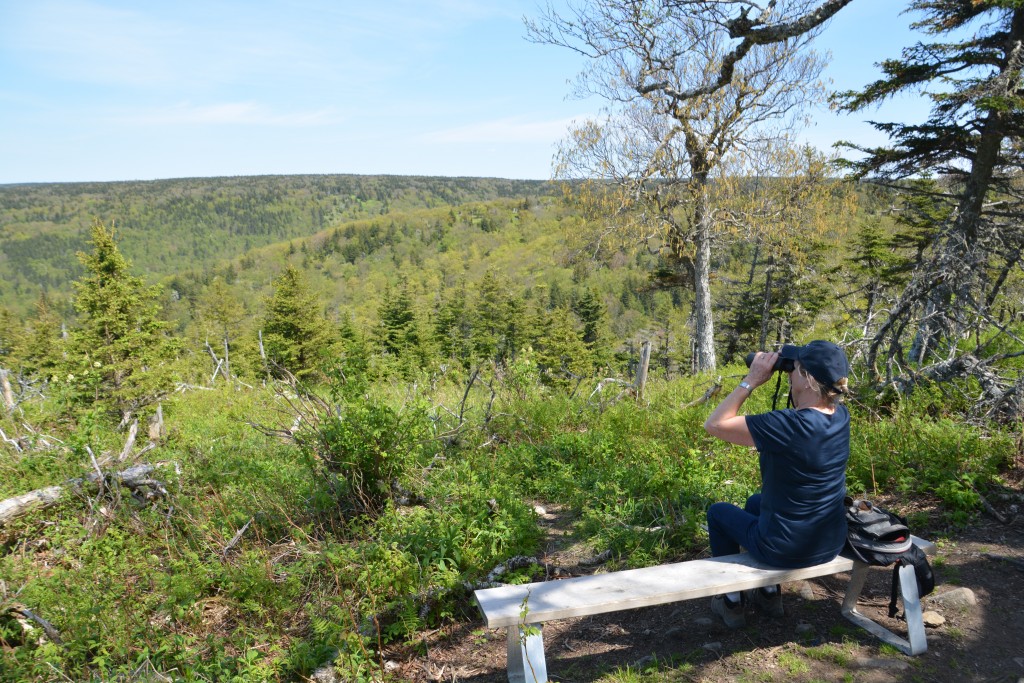
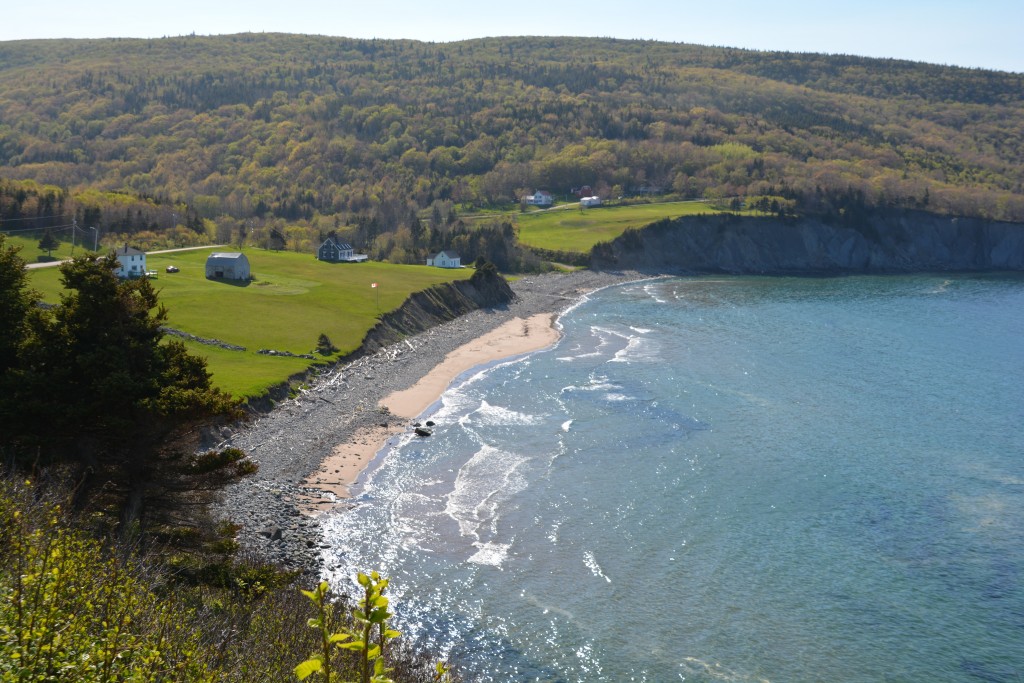
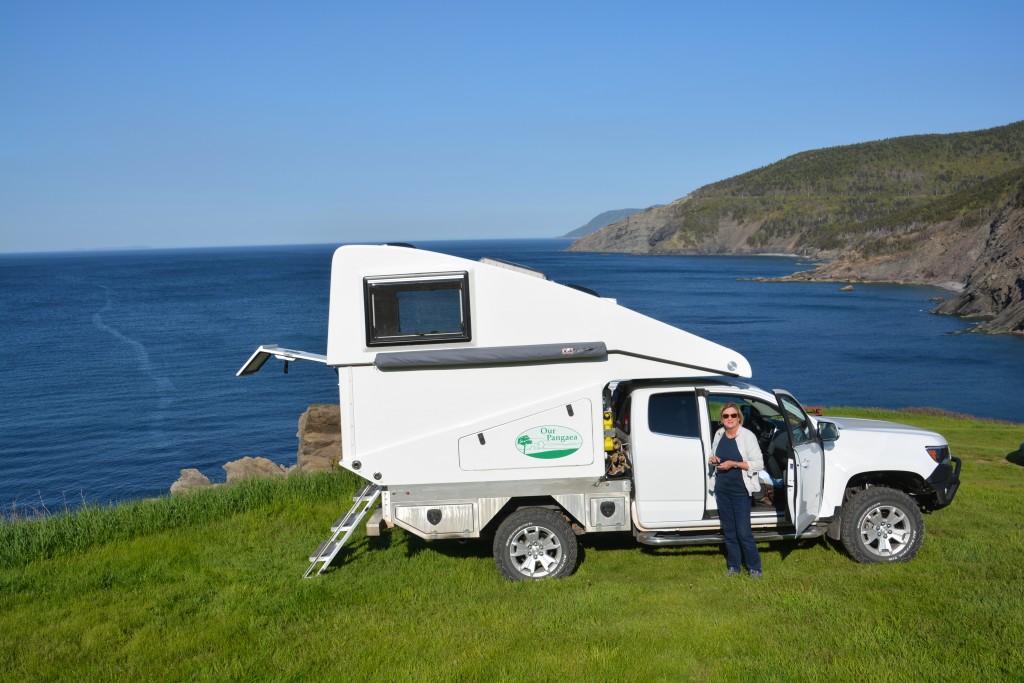
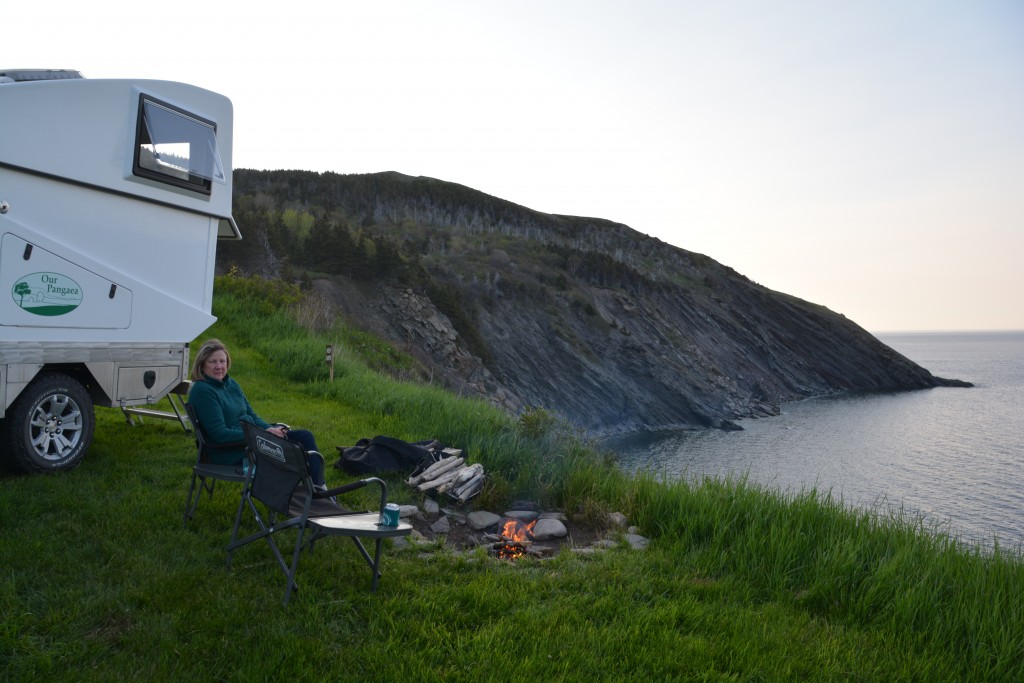
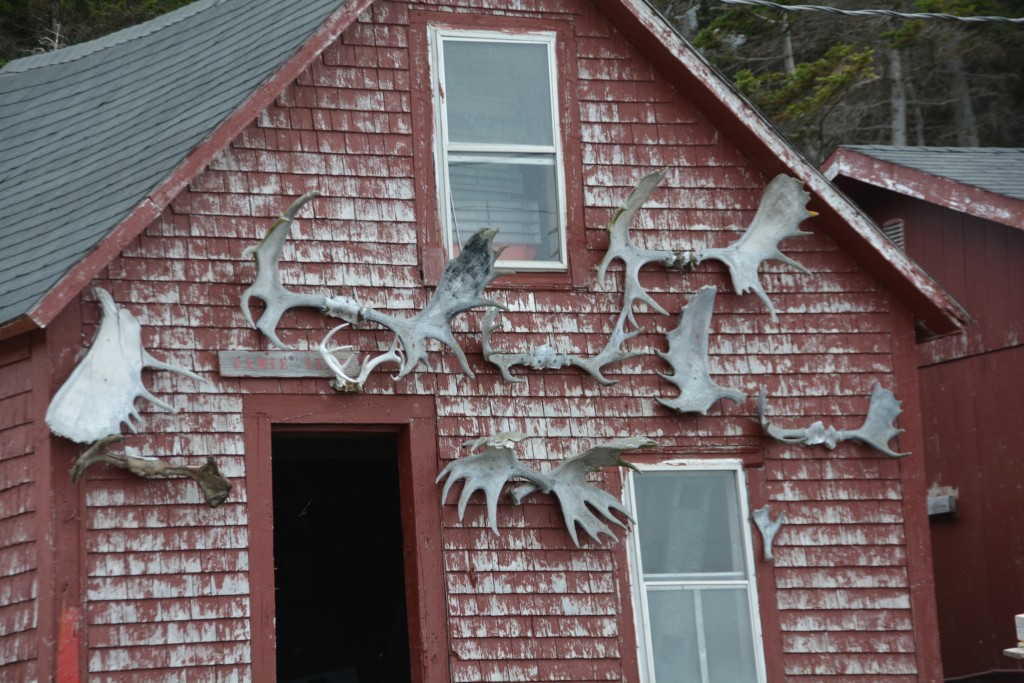
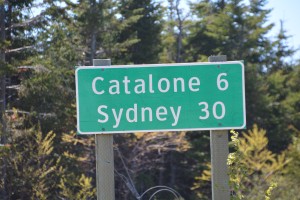
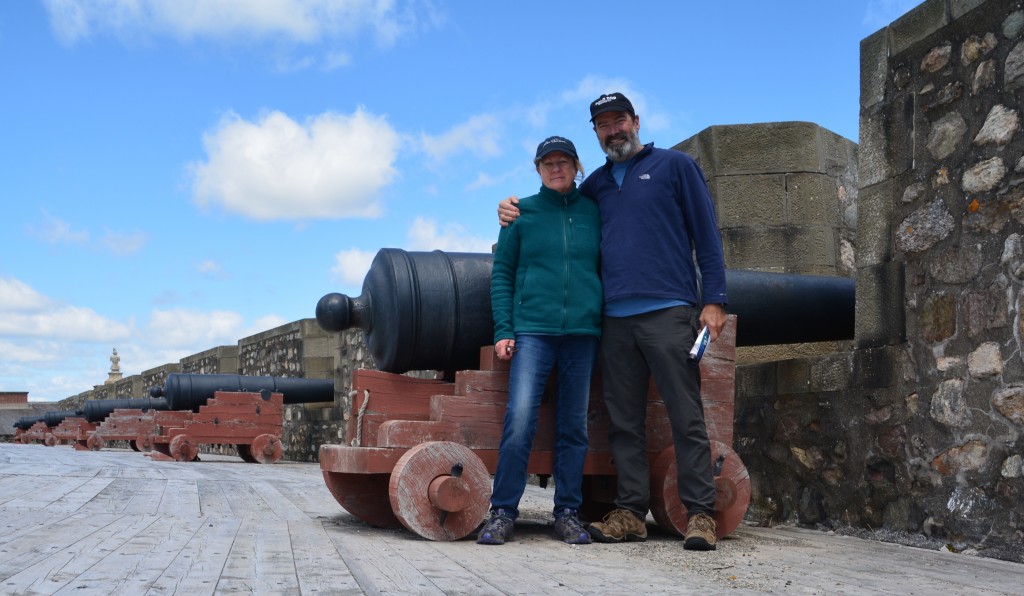
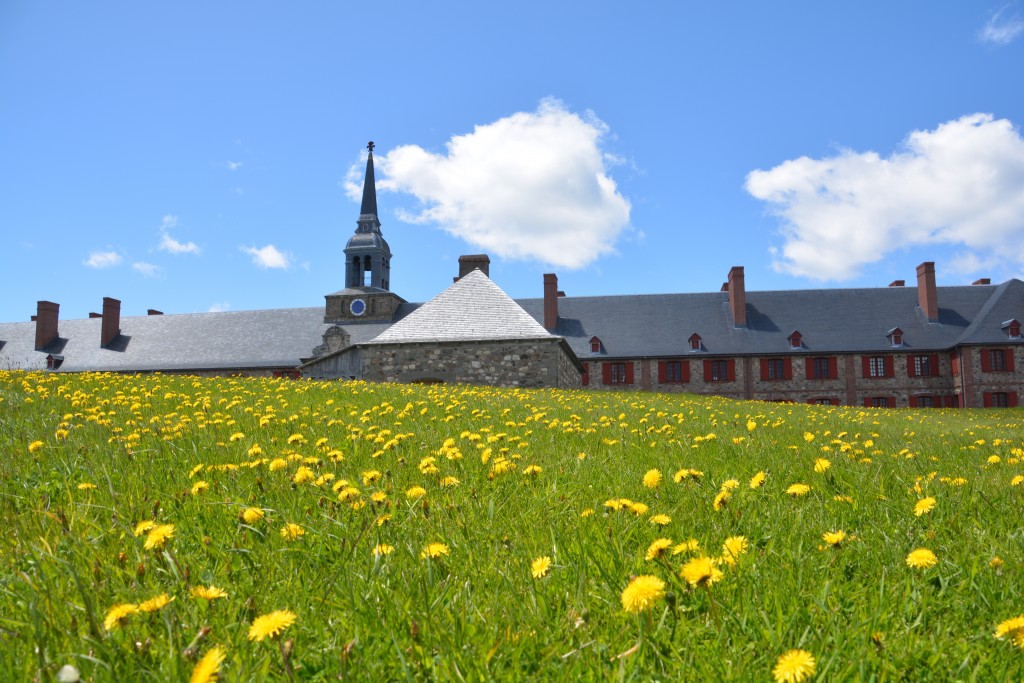
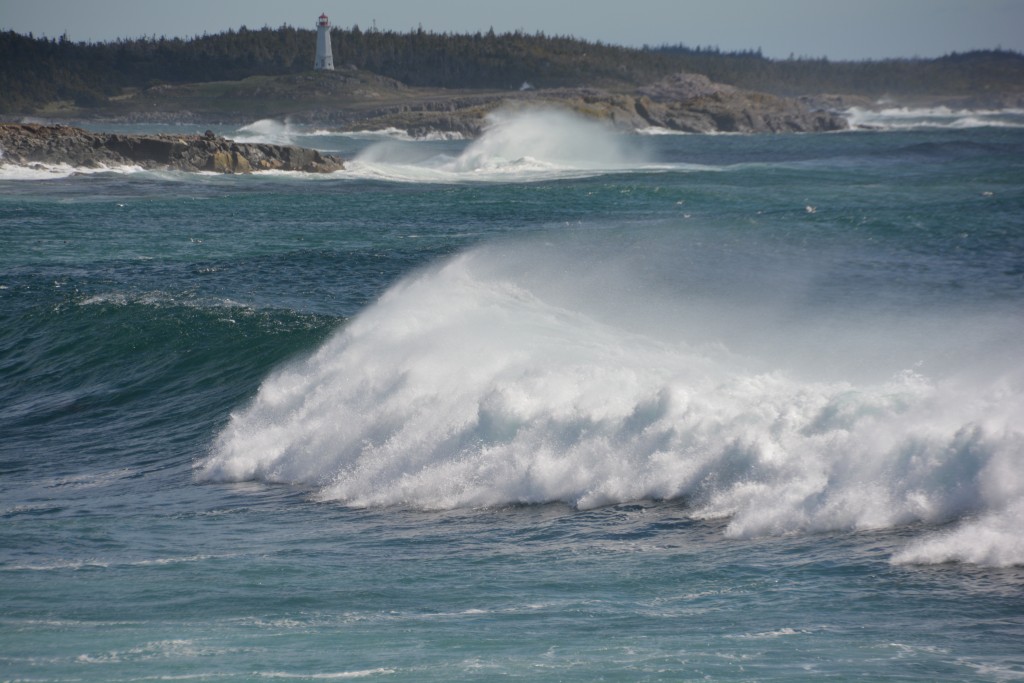
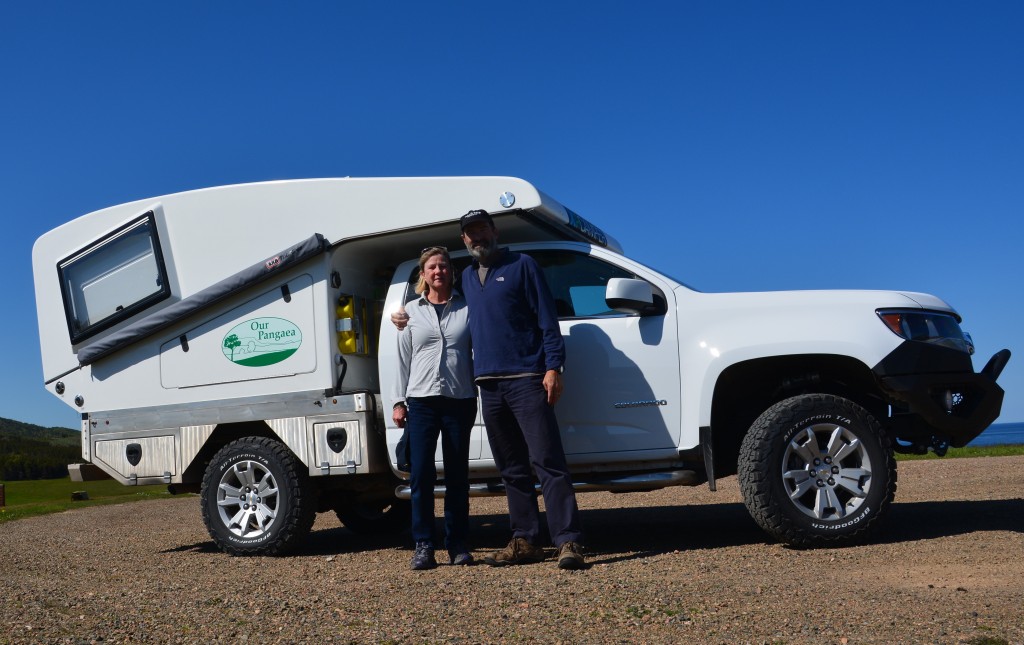
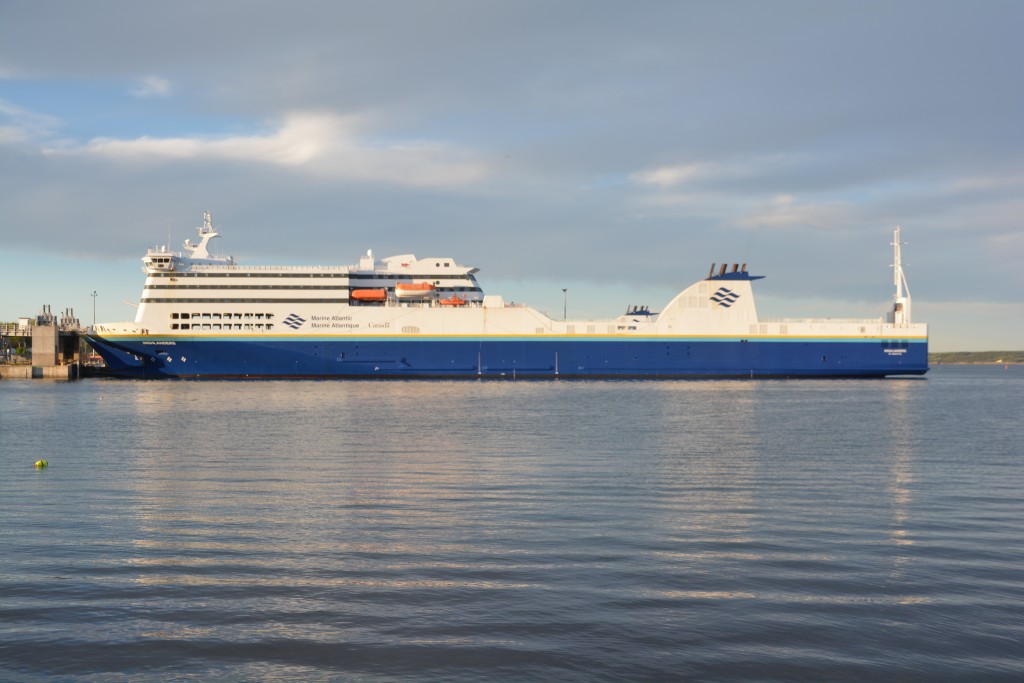
Hello Julie & Bill: We enjoyed talking to you on the Inverness Beach and hope you are enjoying your tour.
Hi Rose Anne,thanks for the note. We loved our night on the Inverness beach, we gave it a perfect 10 in our highly sophisticated rating system. We really enjoyed talking to both of you that night and getting a better perspective about living in such a beautiful place. Take care, Bill
I think your “daisies” are dandelions. Do you have dandelions down under?
Daisies are flowers, dandelions are undesirable weeds.
Hi Linda,
Ha! Good pick up, flowers were never my strongest suit. I’ve made the change, thanks!
Bill